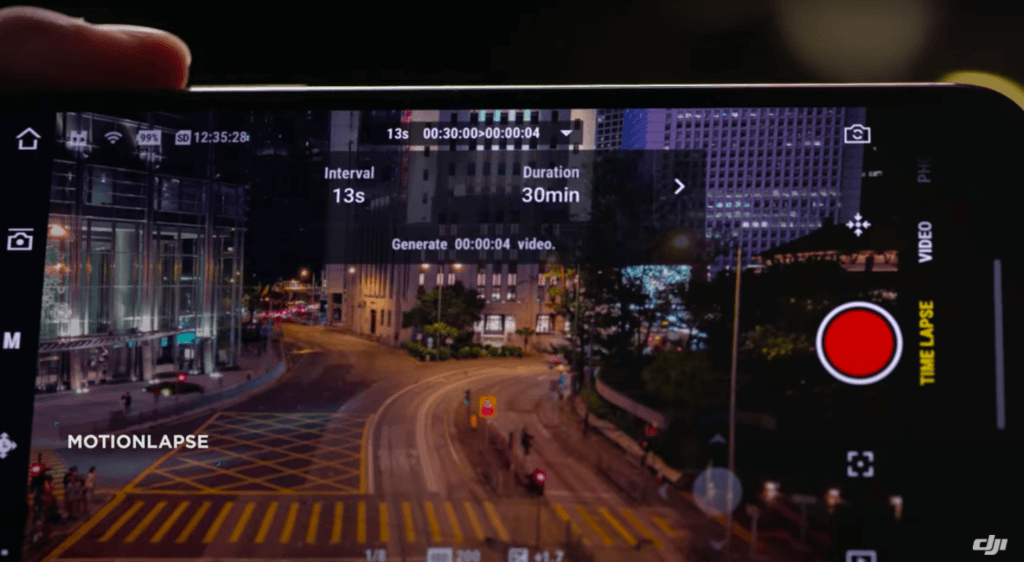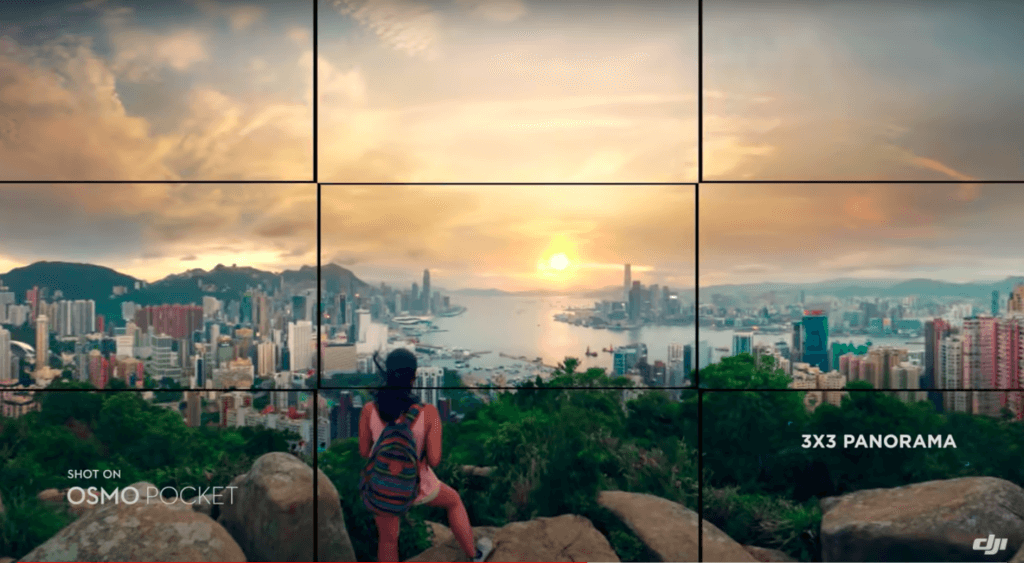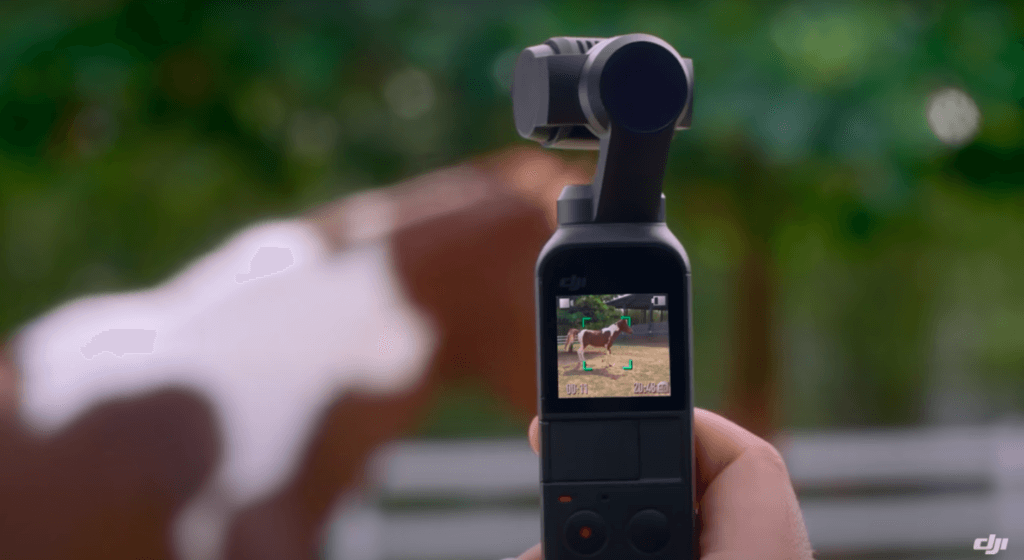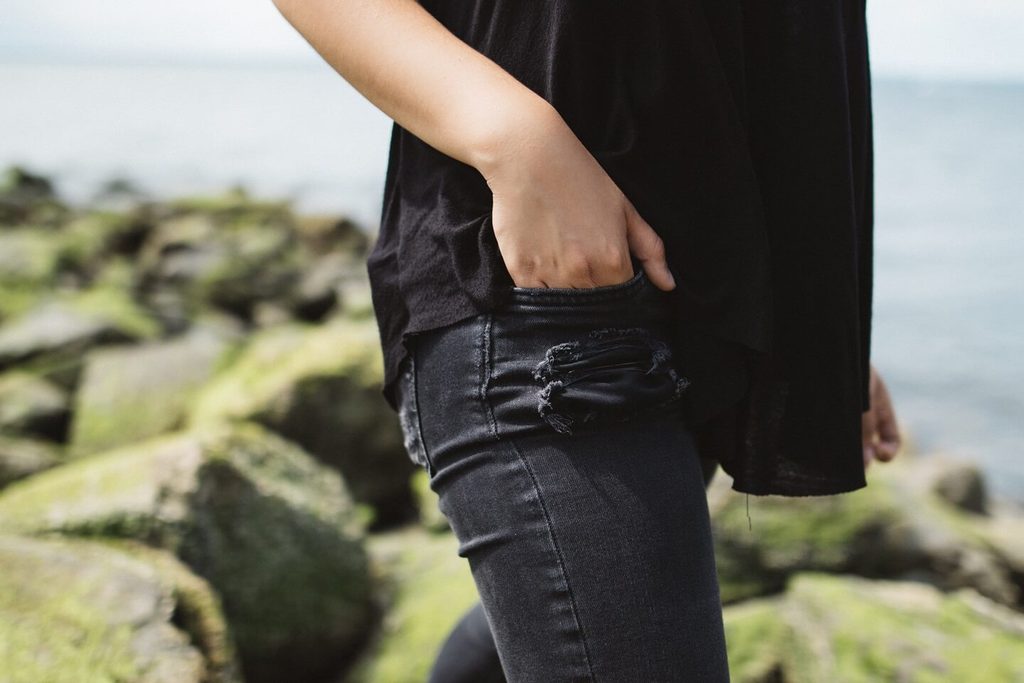Table of Contents:
- 3-Axis Gimbal Stabilization
- Osmo Pocket’s Shooting Modes
- Overall Quality
- Cost and Value
- The Final Verdict
DJI is known for their quality drones, but they’re a capable competitor in the camera field too. And that’s evident with the Osmo Pocket, a camera with a unique value proposition most competitors can’t match.
Unlike most portable handheld cameras, the Osmo Pocket uses hardware instead of software to address shakiness. It uses a gimbal stabilization system that allows for unique shots as well as remarkable feats of stability.
But is it worth the price?
The Gimbal Mount: DJI’s Answer to Stabilization
Camera stabilization on the go has been something people have struggled with since before the days of the original Steadicam. Garrett Brown’s invention made long, steady shots with a camera possible for the first time and film was never the same.
But the Steadicam system was built on a big vest with gimbals and weights, and as time has passed and cameras have gotten smaller and lighter, camera stabilization has gotten more sophisticated. Steadicam and its competitors still make rigs (both large and small), but stabilization has made its way inside the cameras now.
GoPro’s high-end cameras are often noted for their image stabilization, especially in their latest models. But to achieve that stabilization these camera will crop out parts of the image digitally or optically, a completely different process to the way that old stabilization rigs worked.
DJI’s stabilization is similar to the original stabilization rigs because it uses hardware instead of software. The camera head is mounted in a gimbal that moves to stay in contact with the horizon or an object you want to track.
In testing, the Osmo Pocket’s stabilization is very solid, in some ways better than the digital stabilization. It depends on the application but it does the job it’s asked to do admirably.
It’s definitely not the most durable solution you could hope for, though. Unlike the GoPro and its action camera competitors, the Osmo Pocket is clearly not built for heavy-duty use. It looks like it’s more aimed at the vlogger or casual market, especially with the extra modes that take advantage of the gimbal.
Osmo Pocket Shooting Modes
Because of the particular way the camera is mounted, the Osmo Pocket is particularly good at shots that vloggers often like, including time lapses. It’s a natural extension of the stabilization technology. If you want those capabilities without splashing out extra for special accessories, this camera is a good choice.

The automatic tracking is excellent, and it works both in a selfie mode and in object tracking. Autofocus also works seamlessly, which is a change from launch. At launch the Osmo Pocket had issues with constant focusing and refocusing, but with firmware updates it’s sharpened up dramatically. Firmware updates are what is keeping the Osmo Pocket relevant and still worth the purchase in 2020.
The gimbal allows for easy panoramas, too. The head will spin and quickly take nine photos in a 3×3 grid, then seamlessly combine them into one larger panoramic shot. It only works well if the camera is held very steady, but it’s usually easy enough to do this by hand.

That points up one of the weaknesses of the Osmo Pocket: it has excellent X- and Y-axis stabilization, but the Z-axis doesn’t have much going for it. Walking can cause more shake than most people are comfortable with on a stabilized rig, even at a regular pace.
There are aftermarket mounts you can buy that will allow you to stabilize in all three directions, providing complete stabilization, but that’s an extra expense and accessory to carry. Still, the small size of the Osmo Pocket means that you’re not sacrificing a ton of space for your Z-axis aftermarket mount.
This is the major thing that competitors like the GoPro have going for them: they may lose more of the image because of their digital stabilization, but they allow for stabilization on all three axes. If you’re doing a lot of work that involves heavy stabilization from that third angle, it may be worth investing in a different camera even though the Osmo Pocket is excellent on many other fronts.
Some more advanced features are available through the DJI Mimo app, and a smartphone can be attached directly to the Osmo Pocket. That makes it basically a two-handed camera, though, which negates some of the benefit of the Pocket’s small size.
Osmo Pocket’s Overall Quality
The overall image quality of the Osmo Pocket is excellent, with some caveats.
It has a fairly large sensor for its size at 2.3 inches, and it can shoot 4K, 60fps video — though battery life suffers and the device can heat up. At lower HD qualities battery life can last quite a while. An SD card is used for recording as opposed to the onboard storage that some other devices have.
Stills are very good quality for the size of camera, not at the level of a professional SLR or anything like that but definitely top-tier smartphone quality or better. And the color profile is good.
Regular video and images can be slightly oversaturated with the default color profile, but there are other very good options to explore and most people like that slight oversaturation. In addition, if you like to do editing in post there’s a robust amount of information available for your edits.
Low-light situations aren’t great on this camera. It will work fine for some situations, but at times there’s a little bit of noise in the picture. You can use it in limited applications, but don’t expect it to give you the quality you’d get from a professional camera with a larger sensor and more features.
Be careful with the internal microphones, too. Quality is usually as good as it is with any smartphone but one of the microphones is very easy to cover with your hand if you’re not paying attention, ruining entire takes worth of audio — as Casey Neistat did in his original review.
Overall image quality is as good or better than top-tier smartphones that professionals use for vlogging in most respects, and the stabilization and capabilities of the gimbal in modes like time lapse, panorama and more make it a good choice for many applications.
Cost and Value
The Osmo Pocket itself is fairly reasonably priced for everything it does, though it’s more expensive than some other cameras that don’t have the gimbal. The number of attachments you add can definitely add to the cost, though.
DJI offers different kits with accessories to add to the camera. As of this writing, the Osmo Pocket retails for $369, but the “Essential Accessories” kit that DJI offers brings it up to just over $550 — and they’re fairly essential.
You can do without them, but if you’re going to be using your Pocket extensively the scroll wheel accessory is a must-have, and you’ll need an SD card for sure. The wide-angle lens isn’t completely essential but it’s very good to have, as it opens the field of view just enough to give you access to a whole new range of shots.
DJI also offers other accessories like a waterproof case, extension rod (“selfie stick”), and adapters for external sound and monitoring.
There’s a good aftermarket for the camera with accessories that include gimbal mounts, tripods, cases and more. An aftermarket screen protector, case and gimbal protector are good investments to keep your camera safe if you use it a lot, and some cases have quarter-inch mounts that allow you to use an even wider range of accessories.
Between DJI and the aftermarket, you’ll have plenty of choices.
Osmo Pocket Final Verdict
So the cost is reasonable for the capabilities. But what about future-proofing yourself? You don’t want to buy a camera that you’re going to have to replace a year down the line because it just isn’t cutting it any more.

Fortunately, DJI is actively working against that. They’re constantly releasing new accessories for the Osmo Pocket, and the camera hasn’t gotten worse since launch.
It’s actually gotten better. Regular firmware updates have made the Osmo Pocket a more versatile, sharper and more capable camera than it was at launch, and DJI has shown no sign of slowing down. They have a good track record of supporting their products post-launch.
Considering the value of the post-launch support, the robust OEM accessories and the aftermarket, the Osmo Pocket is definitely worth the investment. It’s a very capable handheld camera in a tiny form factor that offers a unique kind of image stabilization its competitors don’t have.
It’s great as a main camera for smaller productions or on-the-go filming, as a B camera for regular or larger productions or even as a special extra camera for big productions.
It will never replace a dedicated professional video setup or an action camera for those specific applications, but what it does give you is a highly capable and versatile handheld camera that you can literally carry in a pocket.
There aren’t too many competitors on the market that can get close to that, and most of them have carved out their own niches. The Osmo Pocket is its own niche, and it looks likely to stay that way for at least a little while.
If you’re curious about the Osmo Pocket and need a hand understanding whether it or another camera is right for you, or even if you own one and need help figuring it out, we’re here for you. Consider reaching out to HelpCloud Technicians for remote support so we can help you get the most out of your camera.

